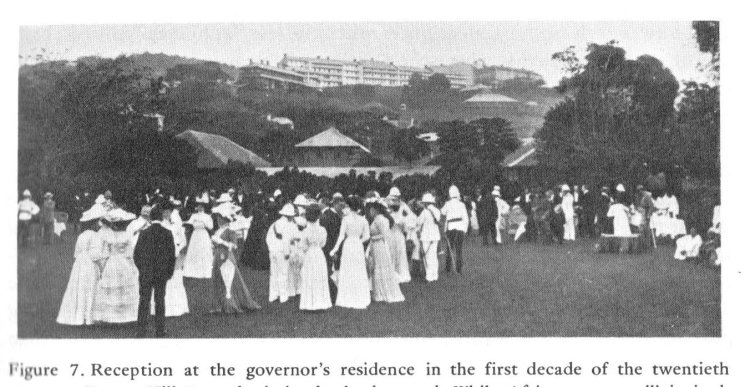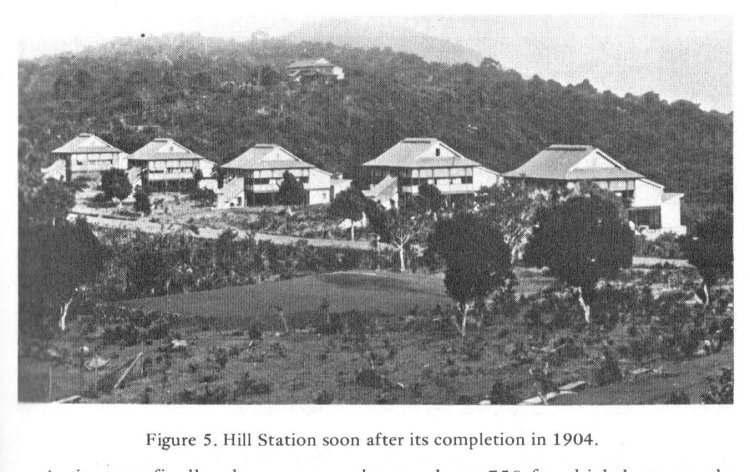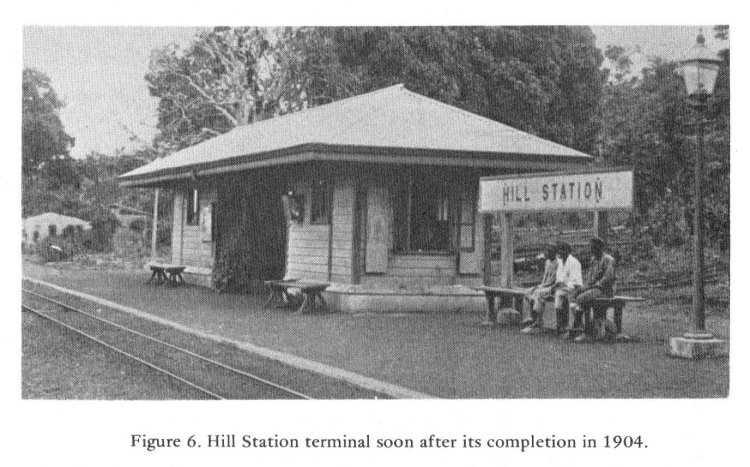The Creation of Hill Station
The Creation of Hill Station
It was intially planned that segregation only take place at night for this was the time when the mosquitoes generally attacked their victims. During the day Europeans could work on their jobs in Freetown, then retreat to the hills in the evening to escape "the bite" which, according to Dr. Ross was " as much to be dreaded as that of a mad dog." 53 The area selected was to be large enough to contain all of the European homes in the colony. It was to be surrounded by a strip of land cleared of trees, plants, and houses, about a quarter of a mile wide, or "of a width sufficient to defy the powers of flight possessed by the average mosquito." Within the segregated area itself, care was to be taken that no place existed where mosquitoes could deposit larvae. Most important of all, the number of African servants in the area during the day was to be reduced to a minimum, African children were to be totally excluded, and during the evening and night, all non-Europeans were to be kept outside the cantonment. To prevent the encroachment of the African population, squatting, house building, and cultivation of land within one mile of the residential area was not to be allowed. Warning signs and fences were to proclaim that trespassing was forbidden. 54
The hills surrounding Freetown were ideal for the establishment of a European enclave. The mosquito population thinned out considerably as the land became more elevated and, except for a few cultivated patches, the areas of planned settlements were free of existing African habitation. A precedent for a location in the hills, moreover, had been set years earlier when a missionary society rest house was established on Leicester Peak.
A site was finally chosen on a plateau about 750 feet high between the villages of Regent and Wilberforce, about four miles from the center of Freetown. Workmen began to clear the bush early in 1902 and, using prefabricated building materials sent from England, completed twenty bungalows and a hillside residence for the governor by 1904. For the sake of maximum ventilation and protection from the insects and elements, the residences uniformly faced north and were raised high above ground on columns. The area beneath the building was covered with cement to prevent the formation of Anopheles breeding pools. And, like its India counterpart, the segregated settlement became known as Hill Station.55
The transportation problem had yet to be considered and solved. The only way to get to the hills at the turn of the century was by walking on bush paths or by being carried in a hammock. Since Europeans living in the enclave would need to commute to Freetown and back daily, however, the success of the settlement depended on rapid, mechanized transport. In 1902, therefore, workmen began to lay track for an adhesion railroad between Freetown and Hill Station.56 The "Mountain Railroad" as it came to be known, running on one of the steepest grades ever attempted for its type of locomotive, opened for goods and passenger traffic early in 1904. From that time until passenger service ceased in 1929, after road-building and car transport had made it a costly anachronism, the train made the round trip three or four times daily with two or three carriages separated by class.57
...Judging from its overall effectiveness, the Hill Station complex was more harmful to the relationship between Creoles and Britons than it was influential in keeping Europeans healthy. Interracial social events in Freetown itself also became less common...The entire scheme, in fact, was misconceived from the beginning...Its multiple failure notwithstanding, Hill Station nevertheless continued to exist as a limited white preserve - the most visible manifestation of Britain's rejection of the Creoles. High above Freetown, it stood as a monument to the deterioration of the British experiment in philanthropy and racial equality which had led to the original founding of Sierra Leone.
What's Your Reaction?























